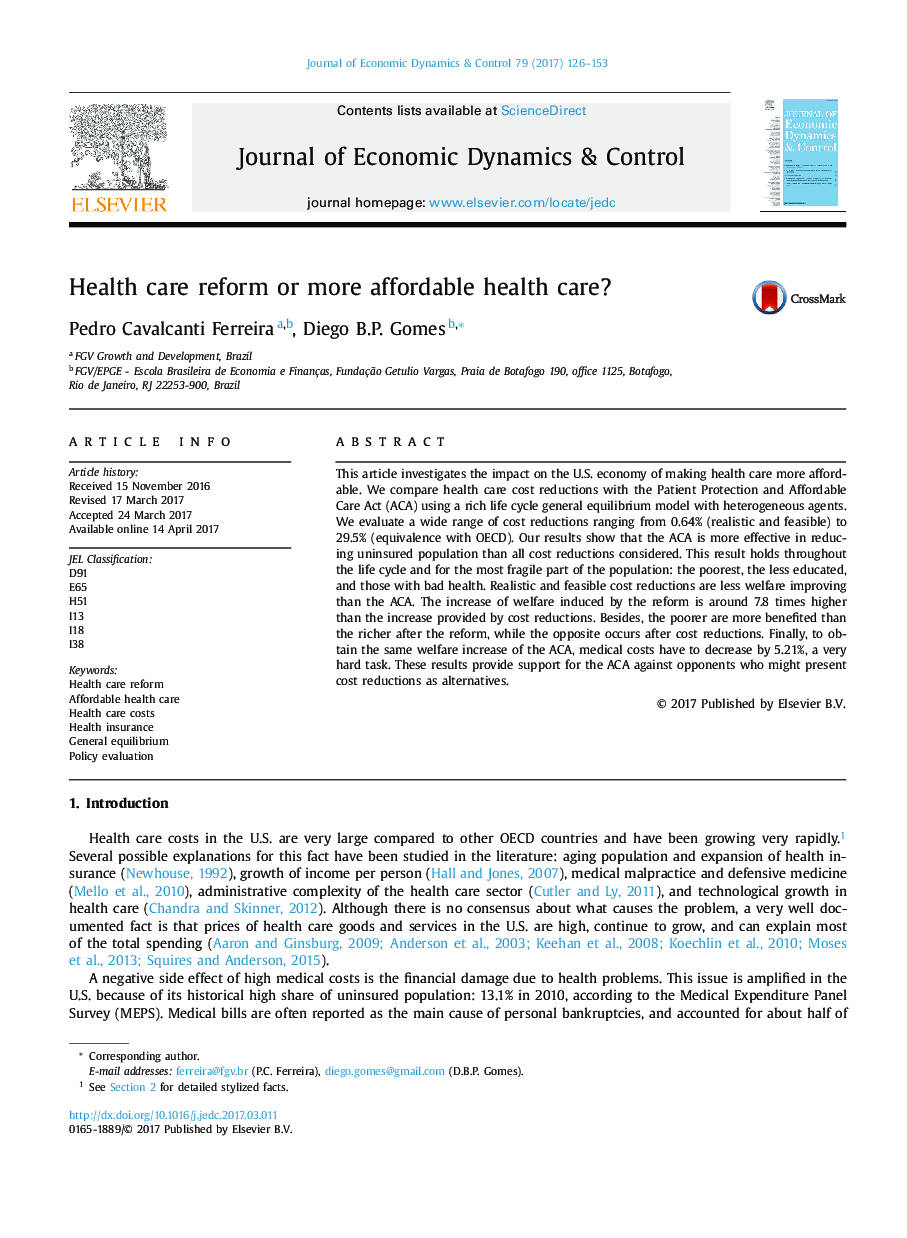| Article ID | Journal | Published Year | Pages | File Type |
|---|---|---|---|---|
| 5098025 | Journal of Economic Dynamics and Control | 2017 | 28 Pages |
Abstract
This article investigates the impact on the U.S. economy of making health care more affordable. We compare health care cost reductions with the Patient Protection and Affordable Care Act (ACA) using a rich life cycle general equilibrium model with heterogeneous agents. We evaluate a wide range of cost reductions ranging from 0.64% (realistic and feasible) to 29.5% (equivalence with OECD). Our results show that the ACA is more effective in reducing uninsured population than all cost reductions considered. This result holds throughout the life cycle and for the most fragile part of the population: the poorest, the less educated, and those with bad health. Realistic and feasible cost reductions are less welfare improving than the ACA. The increase of welfare induced by the reform is around 7.8 times higher than the increase provided by cost reductions. Besides, the poorer are more benefited than the richer after the reform, while the opposite occurs after cost reductions. Finally, to obtain the same welfare increase of the ACA, medical costs have to decrease by 5.21%, a very hard task. These results provide support for the ACA against opponents who might present cost reductions as alternatives.
Keywords
Related Topics
Physical Sciences and Engineering
Mathematics
Control and Optimization
Authors
Pedro Cavalcanti Ferreira, Diego B.P. Gomes,
